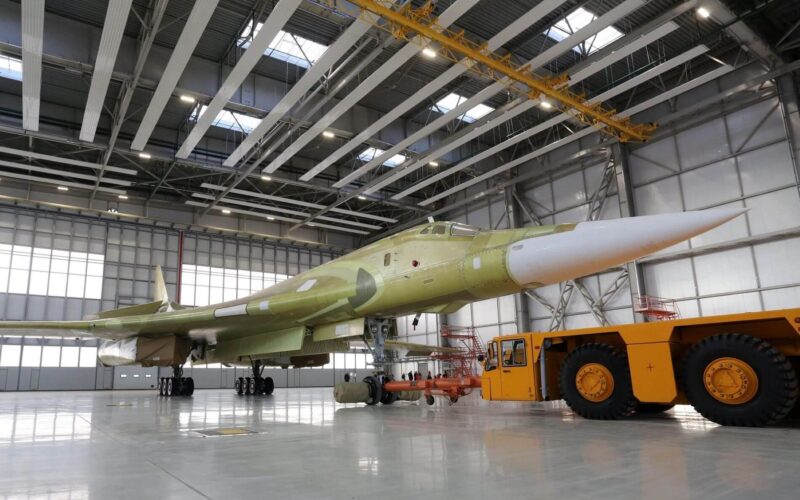A new Tupolev Tu-160M supersonic strategic bomber has been built and is now ready for testing.
The news was announced by Russian state news agency TASS, which referred to an unnamed source within the industry.
According to the source, “The airplane stands in the hangar, ready and fueled. Before the end of the year the Tu-160M is going to perform a taxiing test. The maiden flight is not planned yet.”
The source also revealed that the date of the first flight is currently undecided and remains dependent on the decision of the management.
The new aircraft will be the first Tu-160 produced from scratch in two decades. The production of the type officially ended in 1994.
Although 35 aircraft of this type were produced at the time, many were left unfinished. Most of those delivered to the military remained in the hands of the newly created Ukrainian Air Force and were not operated.
In 1999, Russia began to acquire Ukraine’s Tu-160s, as well as working on the aircraft that had not been finished before the halt of production. One such aircraft was introduced in 2000, and another in 2007. At the same time, the modernization of already existing aircraft to the Tu-160M variant was initiated.
In May 2015, the Commander of the Russian Aerospace Forces, Viktor Bondarev announced that the Russian Defense Ministry has decided to resume production of the aircraft, stating that up to 50 new Tu-160s were to be manufactured.
A trial run of the renewed production began in 2017, when a Tu-160M2 was rolled out. The aircraft was built on the basis of an airframe that was left unfinished in 1994. It was heavily upgraded with advanced avionics and a new engine. The aircraft conducted its maiden flight in 2018, and was delivered to the military at the end of the same year.
Meanwhile, Tupolev’s S. P. Gorbunov factory was building at least two new aircraft from scratch. They were supposed to be built in the slightly older Tu-160M variant, and at least one of them was intended to fly by the end of 2020.
The rollout appears to have been delayed for an unknown reason, but, as TASS’s source claims, it will now take place before the end of 2021.

